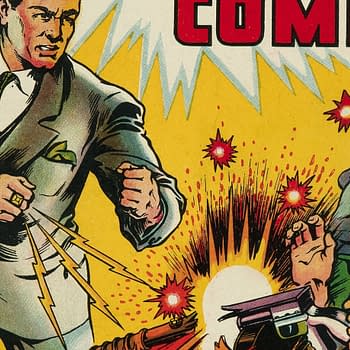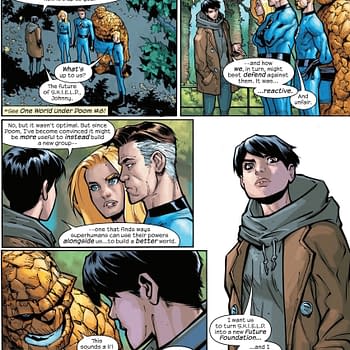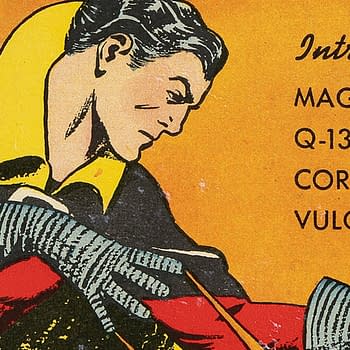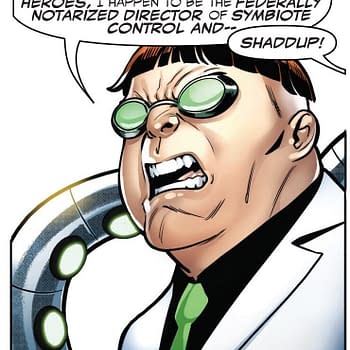Posted in: Comics | Tagged: Chris Yost, clone saga, dan jurgens, J.M. DeMatteis, john romita jr, kaine, mike wieringo, Mike Zeck, Ryan Stegman, scarlet spider, spider-man
Scarlet Spider #1 Preview – And A Look Back At The Clone Saga
Marvel calls it, "Redefining power and responsibility," but for many in the comic community it's another return to the worst of the 1990s.
The Scarlet Spider – the man formerly known as Kaine – is back in his own series.
As for me, neither one feels quite right; I find it hard to look at a character that had long been portrayed as a sociopath as a heroic figure, nor do I feel that the Clone Saga deserves anywhere near the revulsion it receives.
In the years leading up to the Clone Saga, the character of Spider-Man had moved dramatically away from the Peter Parker millions had grown up with. He was now married to a supermodel, a photojournalist successful enough to have gone on a coast-to-coast book tour, and he was no longer the youthful, vibrant character we knew to be Spider-Man. As former Spider-editor Glenn Greenberg notes in the brilliant blog on the Clone Saga, the Life of Reilly,
The thing that should be pointed out, though, is that when Peter first made the pact with Venom (I believe it was in AMAZING SPIDER-MAN #375), the clone saga had not yet even been conceived, so it's not like this pact was an intentional part of a future story plan, or to drop a hint that maybe all was not right with Peter. The truth of the matter is that Peter was simply written way out of character in that Venom story, and the clone saga writers were able to later pick up on it, acknowledge it, and use it to their advantage.
Returning to the very first clone story, in Amazing Spider-Man #149, would give the Spider-Man writers and editors a way out of so many mistakes of the past. The "clone" was never married. The "clone" never made pacts with Venom, or even wore an alien costume, and would never have teamed up with characters like the Punisher. The "clone" was just a regular guy, with everyday struggles like everyone else, only magnified.
The explanation for the return of the clone was quite easy. At the end of the original story, "Peter" dumped the body of the person he thought to be his clone in a furnace and moved on with his life. How did he know he was the original? "Peter" assumed that he must be the real one because he loved Mary Jane, not Gwen, which seemed to him to prove things, as the relationship with her had grown in the time that Gwen had been dead. Of course, the Jackal had a sick, twisted obsession with Gwen, so if he is smart enough to create a clone, couldn't he make sure that the clone wouldn't love his Gwen?
While a radical idea when first proposed, it quickly began to make sense to everyone involved. After all, they could return the character to his roots without invalidating any of the stories written in the intervening years. The one we had been reading about for 19 years would be allowed to go off gracefully while giving both the writers and us readers a Spider-Man that finally acted like the carefree, honorable Spider-Man that we had been missing for so long. We had a Spider-Man that was repulsed by "Peter" making a deal with Venom, instead acting as a hero at any and all times. Spider-Man was back. As Greenberg says,
I always hated the pact between Peter and Venom, I thought it was so out of character for Peter to make such a deal with a villain as obviously crazy and dangerous as Venom, and it was especially interesting to hear Ben voicing my own opinion. It was good to see this used as a way to show a major difference between Peter and Ben, and to perhaps imply that all was not right with Peter, that maybe Ben was the preferable choice between the two.
The biggest problem with the Clone Saga though would not come in declining sales, but instead in a sales spike, making the Powers That Be drag the Clone Saga out for far longer than originally planned, but even that had its benefits. Instead of the Clone Saga ending in Amazing Spider-Man #400, we had J.M. DeMatteis and Mark Bagley brilliantly capturing the death of Aunt May, giving us a story with more emotional impact than any Spider-Man story has since. Aunt May, as this story went, always knew that Peter was Spider-Man – she was old, not dumb – and she embraced her end in a noble way, getting to say proper goodbyes before departing for Heaven to be with Uncle Ben.
Following this would be a short period of both Spider-Man and the Scarlet Spider covering Manhattan before Peter would step aside, leaving behind the city to live, finally, "happily ever after" with his pregnant wife. Meanwhile, Ben would assume the role he should have never left.
We had a youthful, joyous Spider-Man back, with no marriage, no cynicism, and having been out of the superhero action for a few years learning what he needs to do to once again be the hero the people of New York need. At the same time, no stories involving the Spider-Man we had been reading about are violated or negated, while Peter and Mary Jane are given a graceful exit, giving the hero the "Happily Ever After" ending that he always deserved.
This storyline featured some top-notch talent, which only improved with Ben assuming the role of Spider-Man. John Romita Jr. returned to Spider-Man after years away from the character that had made both him and his father famous, first on the Spider-Man: the Lost Years miniseries with writer J.M. DeMatteis and inker Klaus Jansen, followed by penciling duties on the adjective-less Spider-Man, with inks from the legendary Al Williamson. DeMatteis would be paired with another stud artist for another miniseries of his, Spider-Man: Redemption, as he reunited with "Kraven's Last Hunt" artist Mike Zeck. Dan Jurgens would launch Sensational Spider-Man, doing the writing and art, with inks by Klaus Jansen, with the brilliant Mike Wieringo taking over artistic duties when Jurgens left. Fabian Nicieza and Darick Robertson worked on Spider-Man: the Final Adventure, and Mark Bagley continued his long run on Amazing Spider-Man with writers DeMatteis (389-406) and Tom DeFalco (407-415).
Unfortunately, shortly after putting all of these changes in place, editorial changes would once again occur at Marvel, leading to an abandoning of a new status quo that they had worked so hard to achieve.
I can certainly understand those that outright reject the whole premise – that the Spider-Man an entire generation grew up with was a clone – and I can also understand those that preferred the characterization of Peter at this time. Where I see a darker Spider-Man that compromises too much on his principles, an argument could easily be made that he is pragmatic and realistic (which both also fit previous characterizations), and this is a natural outgrowth of all of the hardships he had faced over those 19 years.
I can also certainly see how one would reject the premise behind Ben Reilly, about his willingness to concede that he's the clone and leave everything behind that he knew and loved, as well as the fact that despite great power and great responsibility he ignored super-heroics for years, which flies in the face of everything Uncle Ben taught us. Just like Peter wouldn't be willing to go off and abandon his role as a hero.
Many of the same reasons behind the Clone Saga would be behind Joe Quesada's One More Day, and the defense that I provide for the Clone Saga – look at the great stories that came out of it – can easily be used for the latter attempt too. The reasons I liked the Clone Saga and did not like One More Day can be flipped, with haters of the first and supporters of the second using arguments about the characterization and the plot.
Either way, though, both stories did happen, and that brings us to Kaine. The third Peter Parker during the Clone Saga, Kaine was a degenerating clone that had murdered his girlfriend, and then does the same to Ben's. In many ways, his powers were superior to Peter and Ben – his Spider-sense could give him visions of the future, and he was a far greater physical threat than either. His mental stability had been impaired greatly due to the molecular degeneration, and his idea of heroics would lead to the death of Otto Octavius, amongst others.
That said, the character was the hero in the just-completed "Spider-Island," and one can argue that it was the Jackal that made him a homicidal sociopath, not his own choices, so there is so room for redemption here. Having seen Chris Yost thread the line between what is a hero and what is going too far in X-Force, he's the perfect writer for a character such as Kaine. Ryan Stegman's work in the preview pages Marvel has provided is great.
I'll love the writing and the art, but that doesn't mean I have to like the character. Then again, maybe Yost will turn that around too.



















